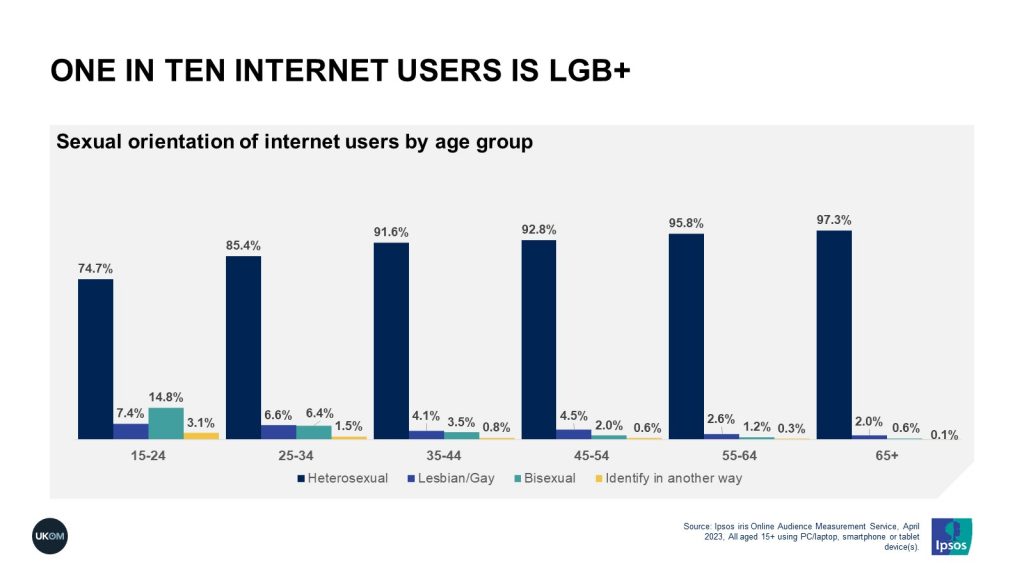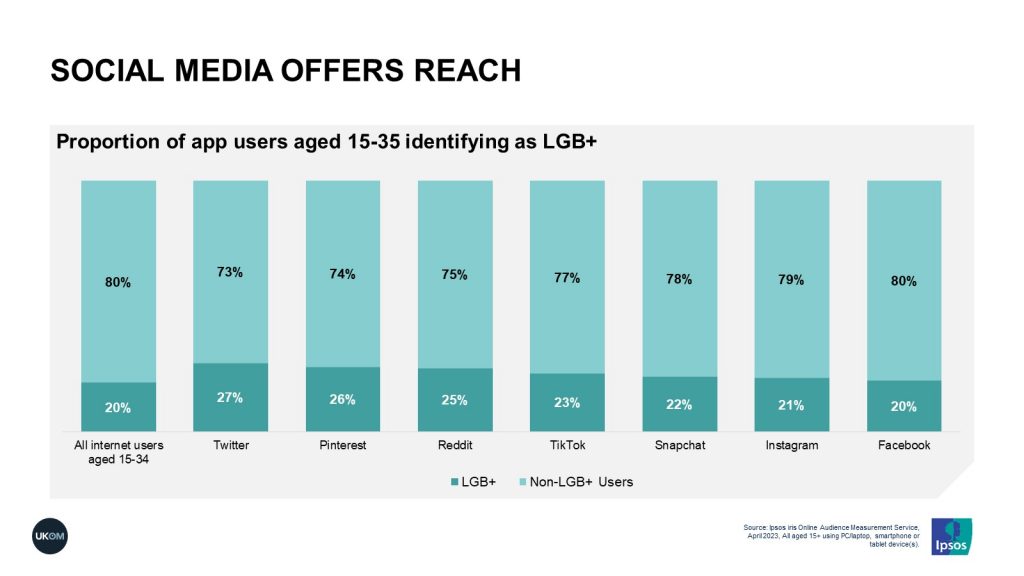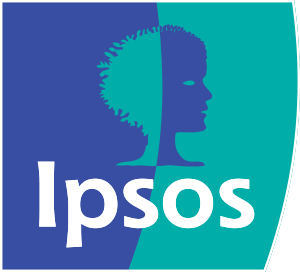How do I reach a specialised audience?
Ipsos iris gives brands a deep understanding of their audience and their sector, with over 60 different profiling variables available across age, income, media consumption and a wide range of lifestyle statements.
This month we have expanded these profiling capabilities even further by adding new metrics on disability and sexual orientation.
Ipsos iris users can now see how much of their audience say they have physical or mental health conditions, as well as the proportion of their visitors that have reported as identifying as lesbian, gay, bisexual or in another way other than heterosexual (a group that the ONS describes as LGB+).
This new data can be broken down by category, device, platform, and brand, offering users an additional lens through which they can view their audience and better understand their needs and interests.
One in ten internet users identifies as LGB+
As we released this update in Pride month, we’re looking in more detail at the new sexual orientation data. Overall, we can see that 10% internet users identify as LGB+, though there is a wide variance by age. A quarter of 15-24 year olds have reported as identifying as a sexual orientation other than heterosexual, compared to just 3% of over 65s. This is most pronounced for those that identify as bisexual, which decrease in number relative to other internet users as they get older.

By looking in more detail at the website and application level, there can be identified a variation in the proportion of LGB+ audiences. Already this Summer we’ve seen the launch of queer dating shows from BBC Three (‘I Kissed a Boy’) and Netflix (‘The Ultimatum’). This granular view across websites and apps could help the BBC, Netflix – or any other brand – to more accurately reach an LGB+ audience.
Social media offers reach
As younger people are more likely to identify as LGB+, it is not surprising that BBC and Netflix have targeted young adults when promoting these dating shows, – especially ‘I Kissed a Boy’, as BBC Three has a remit to provide programming for 16-34 year olds.
Ipsos iris shows that that 20% of all internet users aged 15-34 year old identify as LGB+, but looking at data for April 2023, we can see that this figure is higher on many social media sites.

On the Twitter app, for example, 27% of users aged 15-34 identify as LGB+ (+40% more likely). App users for Pinterest (+32%), Reddit (+29%), TikTok (+19%) and Snapchat (+12%) are all also more likely to identify as LGB+ compared to the average internet user in the same age group.
Interestingly this young LGB+ audience are also more engaged on each of these apps, with LGB+ users spending an average of 27% longer on them during April. Young LGB+ users of the Twitter app were particularly engaged, spending 55% longer scrolling Twitter compared to all users aged 15-34.
Publishers also provide another great way of reaching this audience. Alongside Pink News, where three quarters of visitors identify as LGB+ (+285%), Vogue (+91%), Marie Claire (+57%), the Independent (+24%) and the Guardian (+13%) all attract a higher proportion of LGB+ internet users aged 15-34.
These are just a few examples of how Ipsos iris can help the likes of the BBC and Netflix ensure they are reaching an LGB+ audience — as well as how publishers can show that they’re the perfect partner to help them do so.
For more information about how Ipsos iris can answer your key business questions, fill out the form here to contact the Ipsos iris team.

